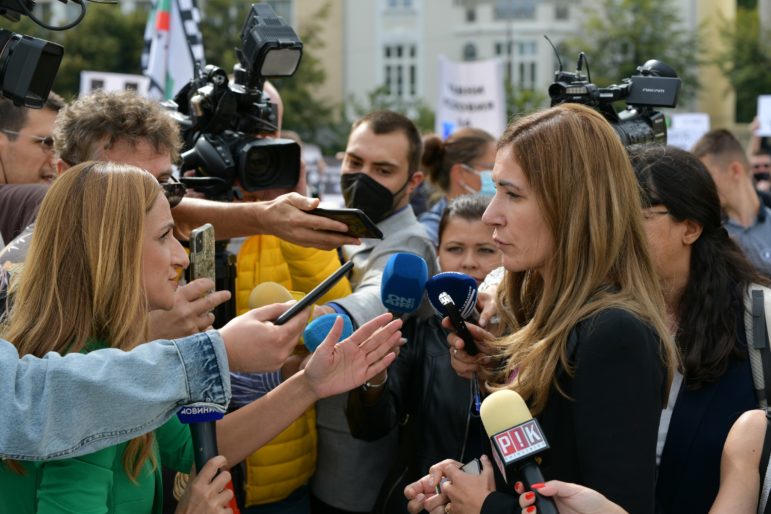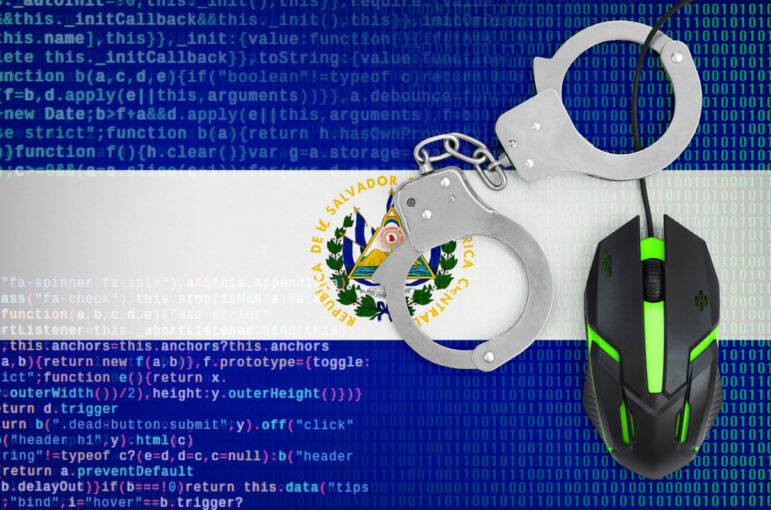

How to Land — and ‘Nail’ — the Accountability Interview: Tips from Recent Investigations
Read this article in
Officials and executives who are under intense scrutiny often dodge interviews with journalists, or hide behind statements crafted by attorneys and public relations advisers.
Veteran investigative journalists suggest that two general strategies, in particular, are effective in getting them to talk: lowering their anxiety by demonstrating your subject knowledge and record of fairness, and piquing their curiosity by showing new evidence you’ve uncovered, and inviting their opinions.
In a session on “How to Land and Tackle Tough Interviews” at the recent 2022 Investigative Reporters and Editors conference (IRE22), a panel of senior investigative journalists shared a variety of tips that helped them conduct tough interviews with reluctant subjects.
But one notable theme from all four reporters was the value of producing some enticement to either get a reluctant source to agree to talk or to extract the answers needed during the interview. This could be showing your subjects documents for their input, inquiring about their opinions on unrelated issues, revealing new information that interests them, presenting evidence of how you’ve handled sensitive sources in the past, or even just being persistently polite, no matter how much hostility you face.
The panel was headlined by reporter Rebecca Aguilar – the first Latina president of America’s Society of Professional Journalists (SPJ), who has won numerous awards for hard-hitting accountability stories for television stations in Texas, Arizona, and California. It also included Jennifer Gollan, a reporter for Reveal from the Center for Investigative Reporting, Cary Aspinwall, a staff writer for The Marshall Project, and Robert Lopez, a Pulitzer-winning senior accountability reporter at The Los Angeles Times.
Aguilar’s most effective pitches to skittish officials often involves upbeat statements like: “Listen, let’s talk face to face, because I want to show you some documents.”
Some of Aguilar’s prior accountability interviews are the very definition of tough. One involved confronting US mail carriers who were listed on sex offender registries. Another targeted an administrator representing a group of dentists who had allegedly used the faces of sedated elderly dental patients to practice their plastic surgery skills. In these and many other cases, she used the tactic of showing them something – say, a mugshot, or a document they had not seen – to the reluctant subjects.
For Aguilar, the ideal interview formula comprises what she calls “the five T’s: truth, transparency, trust, timing, and tone.” While most reporters are generally aware of the importance of integrity in obtaining information, she said, the value of timing and tone is often less understood.
Aguilar pointed out that officials under intense scrutiny tend to accept or deny interviews, or reveal sensitive data, based on their stress levels and personal risk assessments. And these factors rarely align with a journalist’s deadlines, she added.
“You sometimes need to give them time to breathe, because they may know they’re already in trouble, and need to come to terms with it,” she explained. “But you can still stay in touch with them, and let them know what you’re finding.”
As for striking the right tone, Aguilar suggested that reporters train themselves to be “stubbornly nice,” even when their subjects become hostile or insulting — “and never threaten them.”
“Tone is important. I’m always, like, ‘Hi! I’m Rebecca Aguilar from X station! How are you?’” she said, in a breezy voice. You should be honest and upfront about why you’re reaching out, she added, but you don’t have to be unnecessarily confrontational. “You can say, ‘I’m curious to know your thinking on X’ instead of ‘I need to talk to you because I know you’re scamming people.’”
And don’t be thrown off by ad hominem attacks or personal insults, Aguilar advised. “If they say: ‘You’re a terrible reporter,’ or worse, I just say, ‘Well, thank you for your opinion, but I still want to know X.”
The LA Times’ Lopez emphasized that honing one’s skills to land in-person interviews was increasingly important, because of a trend in which officials and executives facing public scrutiny routinely hide behind demands for emailed questions.
“It’s unfortunate, because this is a thing now — it’s become the norm that sources don’t want to sit down with journalists. They want to give you written statements,” he said. “This doesn’t work for accountability questions, because you only know the questions to ask based on their responses.”
There are, of course, myriad approaches to landing interviews that watchdog reporters have found useful, and many are reflected in prior GIJN stories, as well as our resource guide on Interviewing Techniques. Many of these techniques share the need for detailed preparation, careful location planning, and active listening as important attributes for successful accountability interviews.
However, cultural differences around the world mean that investigative reporters must tailor their tactics to local customs if they want to get the access and information they need. For instance, in Western culture, people often become uncomfortable after just a few seconds of silence — so reporters can use those awkward pauses to see if an interviewee might blurt out an unsolicited admission, if only to fill the void. By contrast, people in some East Asian societies may be more comfortable with extended periods where no one speaks – but might be offended if a reporter skips formalities and kicks the interview off with hard or embarrassing questions.
The IRE22 panel shared other interviewing tips that they say directly helped their own recent investigations.
Tips for Landing Interviews
- Demonstrate your past coverage of the topic. “Try to show them your previous work on a similar topic — if it’s a series, point them to earlier stories in the series,” said Lopez. “For victims of sexual abuse, who may worry about being identified, show your stories on the subject, and say, ‘You’ll see there that we didn’t reveal any survivor’s identity, and we’ll do the same with you.’”
- Never assume they won’t talk. “You never know. Try sending handwritten letters; whatever it takes,” said Aspinwall. Aguilar agreed: “Continue to ask, and do it with a smile.”
- Start your own Wikipedia page or clips blog. “How do I build trust? — I tell people to Google me,” Aguilar explained. “Start your own Wikipedia page, and you can say, ‘Check out my Wiki page.’ Yes, people might write BS about you on the page, but you can correct it.”
- Avoid emailed questions, if possible. Try memos or persuasion instead. “Requests for emailed questions are a trend,” said Lopez. “You gotta tell them: ‘Statements are not efficient; we’re wasting time, writing out questions and responses and requests for clarity; I just want to talk about three topic areas — I don’t have the questions because I don’t have your responses yet, so the fairest thing is to sit down and do this.’” Aspinwall added that one work-around for the email interview request is to respond with a summary of your reporting. “Instead of sending emailed questions, you send a memo saying, roughly: ‘This is basically what the story is going to say, this is what people have told us,’” she said. “Sometimes that will convince people to talk. Some will say: ‘Yeah, we’ll do the interview because you’ve got stuff wrong.’”
- Try an indirect appeal. “Work on that person’s friends, their outer perimeter — explain: ‘Hey, there’s already a narrative out there, so I need to be fair. I need to hear it from the official,’” said Aguilar. “People in those positions of stress always lean on someone. It could be their priest, their pastor, their yoga teacher, whomever. Share a copy of your work with that person, so they can show the official, and say, ‘Hey, she’s been fair in the past.’”
- Show up unannounced — if only to get on their radar. While unscheduled visits to officials’ offices rarely turn into interviews then and there, Aguilar said they can set journalists up for later interviews — especially if the visit is made in a polite, non-demanding manner. For example, to secure an interview with the head of a government dental service whose members had allegedly assaulted elderly patients, Aguilar showed up at the man’s office, telling his assistant: “Oh, I was in the area; I wanted to talk to him about some concerns.” “Sure enough, next day he calls me back. Why? I think because I was all happy and cheery,” she explained, referring to both the visit and follow-up calls to the official’s answering service. “I said, ‘I need to talk to you.’ He says ‘I can’t, I work for the government,’ and I said: ‘Oh, that’s nice; my sister works for the government too!’ I said: ‘Let’s talk face to face, because I want to show you some documents.’ I was so sweet that he finally let me in the door.”
Obtaining Documents from Reluctant Sources
Aspinwall said officials sometimes try to dissuade reporters from accessing public documents by either citing the large volume being requested or stipulating a hefty fee for making physical copies. “My pro tip: have you ever carried around a portable batch scanner?” she asked. “They terrify public officials. I show up with my batch scanner, and they finally just make me free copies.”
Describing a college sexual harassment case he worked on, Lopez was faced with a common situation: a source who did not wish to be identified allowed him to view a critical document, but not copy it. Having learned that the document was unique, Lopez said he later renegotiated with the source for the right to use the report.
“We talked about how many people might have the documents, and we agreed on the sourcing — how I would describe this document in a way that was truthful, but didn’t point to the source,” he explained. So Lopez then made calls to everyone who had seen the document – not to get more information, but to protect the source by growing the pool of insiders who could say they’d been contacted by a reporter. “It’s a matter of figuring out what the person’s core concerns are,” he explained.
Tips for Conducting Tough Interviews
-

Investigative reporter Jennifer Gollan’s detailed interview with an ATF official exposed shocking data tracking lapses by the agency. Image: Screenshot
Gather the key facts on the core allegation — and anticipate evasive maneuvers. In an investigation into domestic shootings by people banned from owning guns, Gollan identified the US Bureau of Alcohol, Tobacco, Firearms, and Explosives (ATF) as the agency responsible for tracking the statistics about those perpetrators and their victims. But she found no evidence that the agency had gathered such data. In her interview with the ATF, Gollan used her research to precisely phrase her question to avoid any side steps or vague responses: “How many people are prohibited from having guns because of felony convictions and qualifying domestic violence misdemeanors?” The official was forced to admit: “I don’t know that number; I’m not sure anyone knows.” She followed up with: “How many domestic violence homicides are committed by people who are not allowed to have guns.” Answer: “I don’t know.” When government officials make surprising statements like this, Gollan said it is also important — especially for radio and TV reporters — to repeat the admission in a follow-up question: “So you don’t know how many people have died at the hands of prohibited possessors…?”
- Open with small talk or soliciting opinions in ‘ambush’ interviews. The first 30 seconds are crucial in any adversarial on-the-street interview, and Aguilar said breezy introductions, small talk, and interest in the subject’s opinion are often the best way to get beyond those critical first few moments, and into a useful dialogue. Instead of leaping straight into “Why did you…”-type confrontational questions, it’s better to start with a framing about what the public might want to know: “There are some concerns people have that I need to ask you about.” Aguilar chose a rainy day to approach a mail delivery carrier who she had identified as a registered sex offender of children — so she could open the street interview with a friendly comment: “Gosh, you guys really do go out in all weather!” Next, she reduced the man’s likely anxiety about the TV camera by introducing the cameraman: “That’s John behind the camera – John, say Hi?” Then she said: “Listen, I need to talk to you about something. I learned that you’re a registered sex offender.’ He looked at me and said ‘I am.’” She then switched gears a bit, and asked him his opinion: why he thought it was acceptable for him to deliver mail in proximity to children. The man said: “I did my time; I needed a job.” Aguilar left the toughest question for last, and posed it as a statement: “I hear you molested your step-daughter.” The man replied: “I apologized to my step-daughter.” “If I had more documents with me, I’d have shown them to him – and asked, ‘What do you think about these?’” said Aguilar. “You don’t want to turn them into enemies, you want to ask their opinion.”
- Don’t pretend the interview is for a feature or profile, and then ambush the subject with allegations. “Be truthful about the purpose,” said Aguilar. “I’ve known reporters who get into the interview based on one understanding, and immediately switch it up — that’s not right.”
- If a source starts to minimize the problem, consider the “60 Minutes trick” to re-focus them on the accountability element. Anchors on TV news magazine shows like “60 Minutes” often package a strong sound bite as the last two or three words in a statement to their guests, which interviewees often echo in their response. (A statement like “So it was basically a total scam”, and the source responds “Total scam”; or “So cigarettes are just nicotine delivery systems”, and the source responds “Nicotine delivery systems.”) The IRE22 panel stressed that reporters should not use this technique to extract quotes for publication — since this can amount to putting words in the subject’s mouth. However, they said the trick can be helpful in refocusing print, radio, or TV interviews on the central allegation or wrongdoing in the story. “It really can be an effective technique when trying to get to the bottom line, or distill arcane information,” said Aspinwall. “Alternatively, you can ask ‘Is it too simplistic to say?’; or ‘Would you agree that…?’” Aguilar warned: “But you do have to be careful with this approach, ethically.”
- Plan one critical question for officials who have already publicly declared that they won’t comment. “You have situations where you’ll likely get one question before they slam the door,” Gollan pointed out. “So I’ve carefully thought in advance about exactly how to frame that question. In one case, someone came out with a gun — he wanted me off his property. You just need to be prepared for that moment.”
“I’ve been doing this 41 years, and I still get nervous ahead of tough interviews,” Aguilar acknowledged. “But remember who you’re doing this for. We’re doing a public service here. Sometimes sources will be hostile — but as long as you don’t turn hostile yourself, you’ll still get the interview.”
Additional Resources
Seeking Comment for Your Investigation: Tips for the ‘No Surprises’ Letter
Perspectives on Interviewing Techniques
 Rowan Philp is a reporter for GIJN. He was formerly chief reporter for South Africa’s Sunday Times. As a foreign correspondent, he has reported on news, politics, corruption, and conflict from more than two dozen countries around the world.
Rowan Philp is a reporter for GIJN. He was formerly chief reporter for South Africa’s Sunday Times. As a foreign correspondent, he has reported on news, politics, corruption, and conflict from more than two dozen countries around the world.












